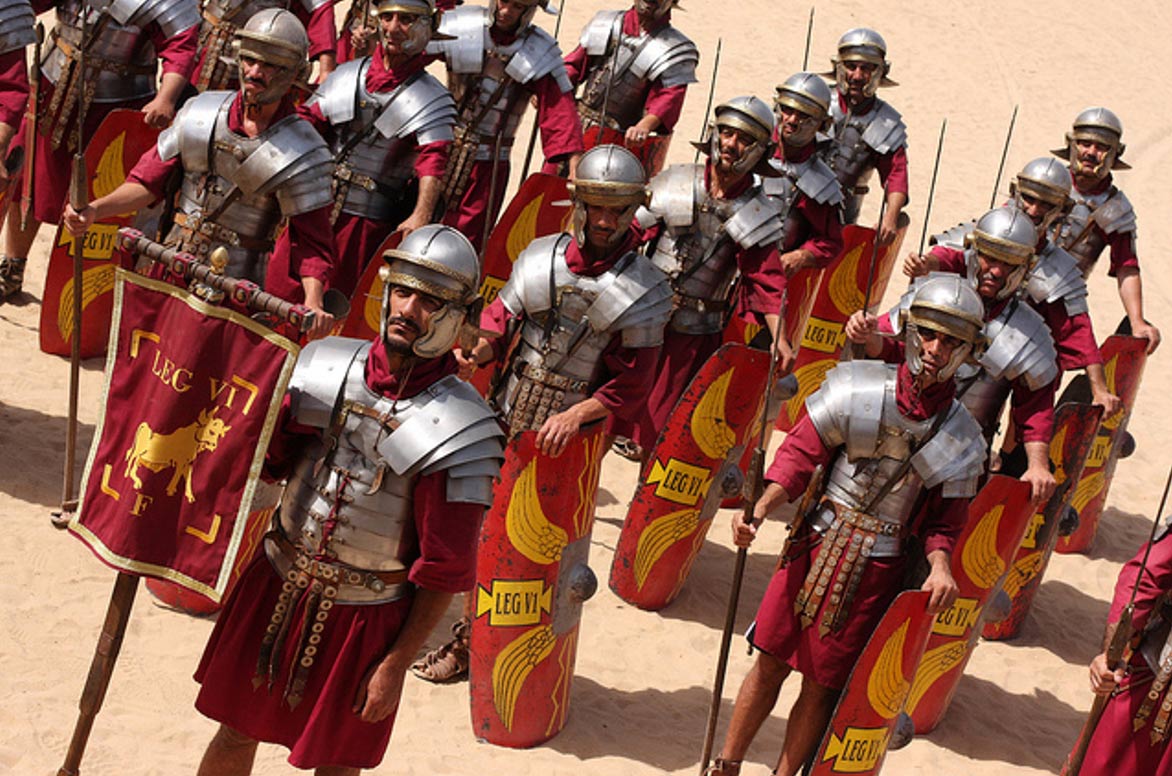Oldest Roman Military Camp discovered in Italy was Built to Fend off Fierce Pirates
An ancient Roman fort has been discovered in Italy by researchers using advanced sensing technology. It is reportedly the oldest military camp built by the Roman army ever found, and the only Roman fortress ever found in Italy. The fortress is thought to have been built to protect against the attacks of fierce pirates 2,000 years ago, and it may hold secrets to the ancient origins of the city of Trieste.
Oldest Fort
LiveScience reports that researchers discovered the ancient fort at San Rocco on the Bay of Muggia - a commune of Trieste province in Italy, bordering on Slovenia. It is believed the camp was built in 178 B.C., as corroborated by the ancient writings of Roman historian Titus Livy (64 B.C. - 17 A.D.) and thus predates the oldest known military camps by decades.
Federico Bernardini, archaeologist at the Abdus Salam International Center for Theoretical Physics (ICTP) in Trieste and the Fermi Center in Rome, tells Live Science “They are probably the most ancient examples of Roman camps in the entire Roman world.”
The main camp is flanked by two other smaller ones, and they may have been foundations for the colony of Tergeste, which later became the modern Trieste.
The original encampment was large, spreading across 32 acres (13 hectares). It was “defended by imposing fortifications, such as wide ramparts up to about 80 feet (25 meters) wide, the researchers said in the new study. It was located on a hilltop in a strategic central position,” notes LiveScience.
To date, various artifacts known as identifiers of the Roman period have been found on site during cursory examinations, such as: hobnails used to make shoes for Roman soldiers, and fragments of amphorae for storing oil and wine.

Military footwear hobnail from Grociana piccola fort. Credit: MiBACT - Soprintendenza per i Beni Archeologici del Friuli Venezia Giulia
Pirate Attacks
Although the site was ideal for the Roman army and the eventual settlement, as it was located at a naturally protected harbor, it is thought that military camps were built to fend off attacks of people known as the Histri who controlled the nearby Istrian peninsula.
The Romans described the Histri as a fierce tribe of pirates, and their presence and movements were recorded by ancient historians such as Livy and Greek historian Strabo.
Bernardini tells LiveScience, “According to Livy, in the first phase of the conflict, two legions of Roman Republic were defeated by the Histri, and the camp was lost. Livy reported that the Histri found a lot of wine inside the camp and got drunk, and this helped the Romans reconquer the camp very easily.”
Study co-author and physicist at ICTP and the Fermi Center in Rome, Claudio Tuniz says, “Their objective was also to protect the new neighboring city of Aquileia from the incursion of the Istrian peoples. Its port was an important emporium for the trade of wine, olive oil and slaves. Aquileia would later become one of the capitals of the Roman Empire.”

The Istrian peninsula, area of origin of the Histi pirates. Trieste, Italy is shown to the north. Istria is now shared by three countries: Croatia, Slovenia, and Italy. Public Domain
MORE
- The Ultimate Pirate Branding Symbol - the Origin of the Jolly Roger
- Grace O’Malley, the 16th Century Pirate Queen of Ireland
- Ancient Roman fort in England may have been constructed to pay homage to Mithra or Sol Invictus
- Hannibal of Carthage: Military Commander and Greatest Enemy of Rome
Modern Technology
The interdisciplinary ICTP team, led by Federico Bernardini and Claudio Tuniz located the large central camp flanked by two minor forts using modern technology: “Light Detection And Ranging (LiDAR) and Ground Penetrating Radar (GPR). LiDAR bounces laser light pulses off the ground to generate precise pictures of surface features, while GPR allows the detection of subsurface structures. Further archaeological surveys helped to assess the relative chronology of the sites,” according to a press release at the ICTP website.

Roman military camp at San Rocco (C). Additional Roman camps Grociana piccola (A) and Montedoro (B). Scale bars: 100 meters Credit: Civil Protection of Friuli Venezia Giulia
LiDAR and GPR technology makes previously inaccessible locations and highly efficient investigations possible today. It can speed up processes by quickly locating hidden features that may have required time and effort with traditional archaeological excavation methods. LiDAR was developed in the 1960s to analyze oceans and ice in the Arctic, but has been employed since in topography, geology and mapping.

Trieste Origins Unearthed. Digital terrain model of the ancient Roman military sites in Italy. Credit: Abdus Salam International Center for Theoretical Physics
The study outlining the finds has been published in the journal Proceedings of the National Academy of Sciences.
Full archaeological excavations are planned for the site in hopes of learning more about the development of the Roman army, and examining the structures that may have been the foundations of the city of Trieste.
Featured Image: Roman Army & Chariot Experience, Hippodrome, Jerash, Jordan. Yeowatzup/Flickr
By Liz Leafloor


















